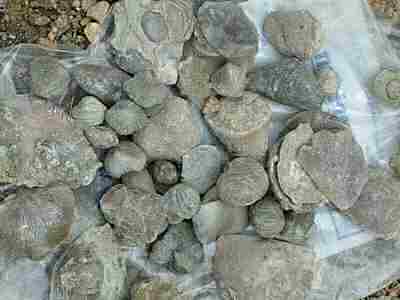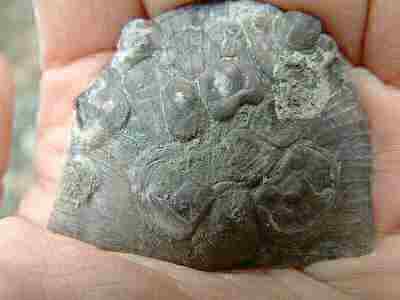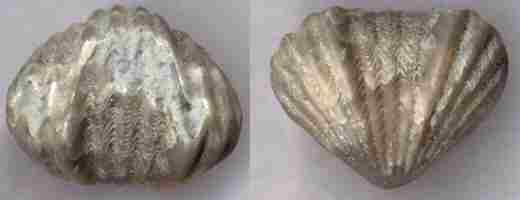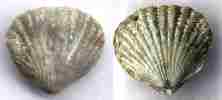Dry Dredgers Field Trip
March 26, 2005
Brookville, Indiana
Page 5: More Fossil Finds
Brachiopods
By far, the most abundant fossil on this site was the brachiopod. Here, for
example, is a typical mix of fossils found. Almost all of them are brachiopods.

Above photo compliments of Cindy
Close examination of the articulate brachiopods, Rafinesquina
and Strophomena, reveal that the brachs were encrusted with
inarticulate brachiopods, such as the Petrocrania scabiosa shown
below.

Above photo compliments of Cindy

The most common brachiopod are the articulates. And among the articulate
brachiopods on this site, the most abundant is Lepidocyclus, with
varying species. Shown, above, is an example with both sides. It belongs
to a group of brachiopods called Rhynchonelid's, which includes another common
brachiopod found on this site, but not pictured, Rhynchotrema dentatum.

Much smaller than the Lepidocyclus, but just as common on this
site, is the brachiopod Zygospira. These brach's have the same
"haring bone" pattern as the Lepidocyclus, but belongs to a group of
related brachiopods called Atrypids.
T A B L E O F C O N T E N T S
Page 1: Introduction and Collecting Photos
Fossils Found that Day
Page 2: Best Finds of the Day
Page 3: Crinoids, Pelecypod and Cephalopods
Page 4: Snails, Coral and Trace Fossils
Page 5: Brachiopods
Page 6: More Brachiopods
Page 7: Yet More Brachiopods